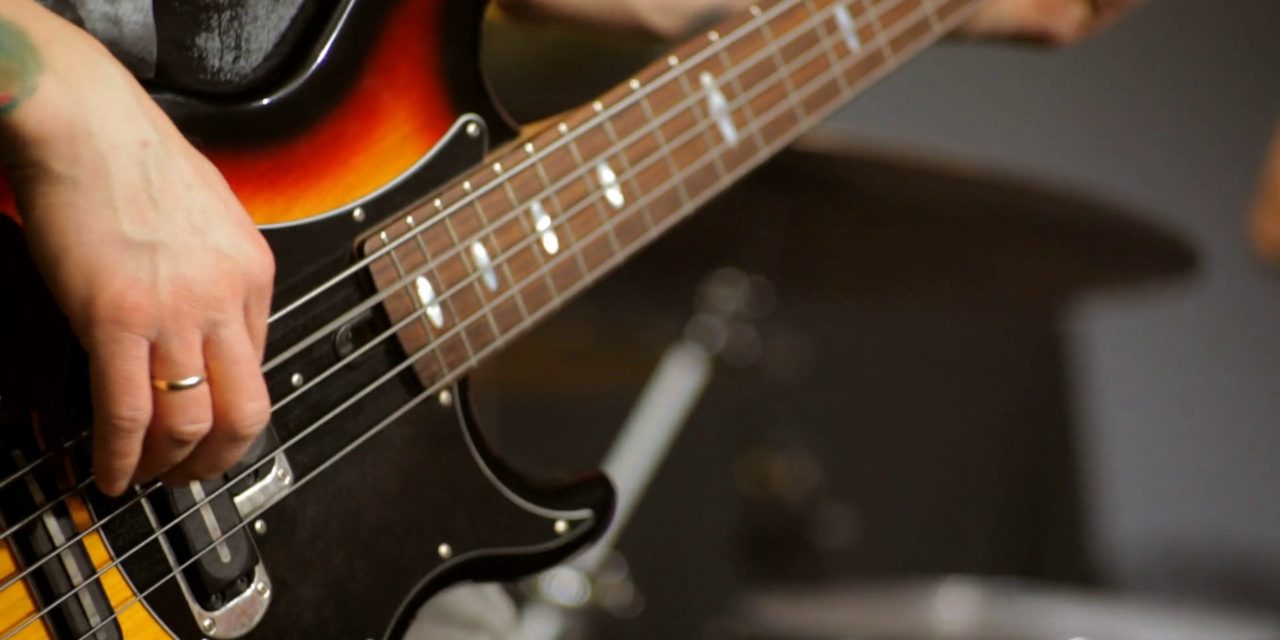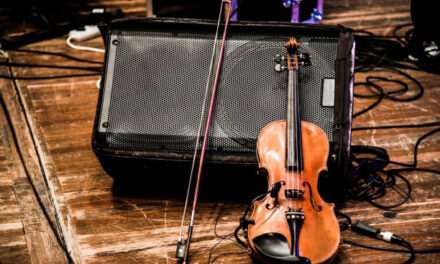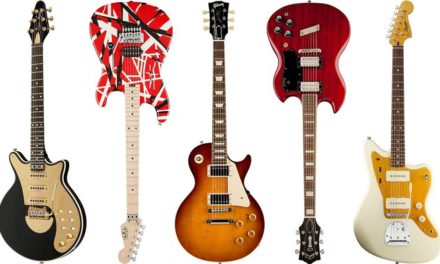Rumor says that bass player is usually the coolest guy in a band, well people may hold disagreement to this statement, Bass, indeed is a very cool instrument. Though similar in appearance and construction to an electric or an acoustic guitar, but has a longer neck and typically comes in four strings, rather than six.
However, it is not saying that bass is a guitar with two fewer strings. It has a different tone, scale length, feel and musical role, and in many cases it requires a different conceptual and technical approach. Let’s take a closer look.
Difference in Appearance
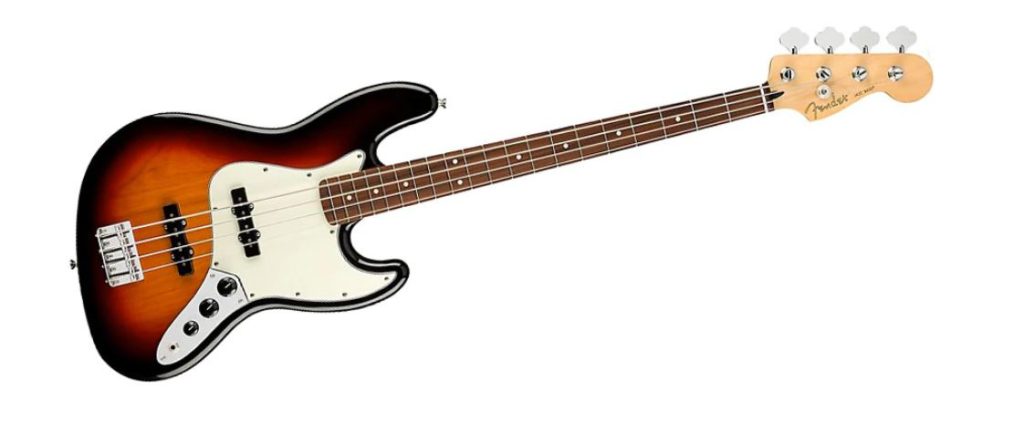
Guitar:
The electric guitar is a six-stringed instrument, and standard tuning is: E-A-D-G-B-E. That means the lowest string is tuned to the note E, the next to the note A, the next to D and so on. But knowing the notes isn’t really important right now, as much as understanding how the guitar and bass are related.
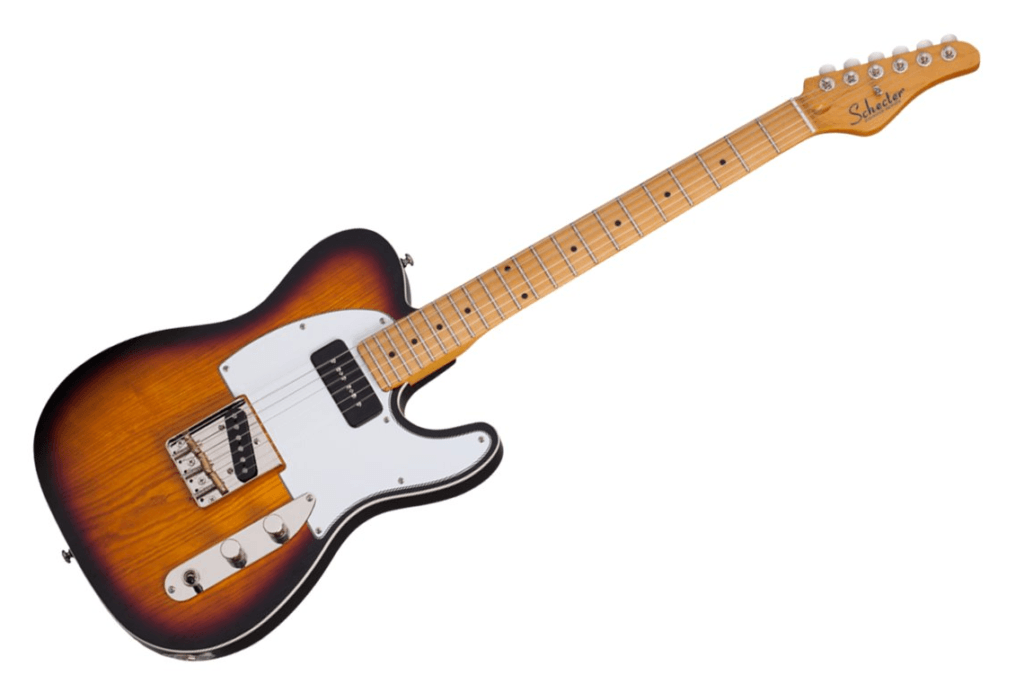
Bass:
The standard bass guitar has only four strings, and is a slightly larger instrument. The tuning of a bass guitar is the same as the lowest four strings of a regular guitar, except one whole octave down in pitch, just like upright bass in the violin family. Therefore, the strings of the bass guitar are tuned E-A-D-G, just like the lowest four strings on a regular guitar.
Difference in Role Played

Bass:
Traditionally, bass guitar plays a supportive role along with the drummer to create the pulse of the music and set the music’s foundation. In truth, while average bass players may be content with taking a backseat, a good bassist knows that his or her job is to carry the band. They provide the backbone that holds up the other instruments.
In genres like jazz and blues, this means settling into a groove and working with the drummer. In metal and hard rock, it means supplying the meat of the guitar riff, that part of the sound that puts the audience through the back wall. Think again of that Queen song and how you can immediately tap your foot to the music. That’s a large part of what a bassist does.

Guitar
Guitar has a role that is much more diverse than bass. Where the drums and bass are generally considered the “rhythm” section of a band, the guitar player has more freedom to go off-script with solos and embellishments. Of course, the guitarist must also provide a certain amount of rhythm support in most genres, but the entire band is less likely to get out of whack if a beat is missed by the guitar player.
Guitarists are generally considered more musical than bassists, and in rock music they tend to attract a great deal of attention. After all, it’s their riffs and solos that are most memorable in many forms of modern music.
You will see many bands without guitarists and without drummers, but not many without a bass player. This should tell you the significance of bass guitar in a group. Moreover, the bass still has all the same possibilities as the guitar. You can solo and play many things like a guitarist does. It’s just not the traditional role the bass plays and what people often want from a bass player.
Difficulty in Playing
Some people think that bass is easier to deal with because it has only four strings, but that’s not necessarily true. Depending on what musical genre you’re interested in, and how hard you want to push yourself, both guitar and bass can be fairly easy or extremely hard.
Physically, many people may find the guitar easier. The bass is a bigger with thicker strings, and some new players struggle to fret the notes correctly. But if bass is where your passion lies, don’t let this stop you. However, bear in mind that bass only has four strings, which means you will have to memorize fewer chords, so if you just want to join a band and get playing as quickly as possible, then it is probably easier to be a bassist.
The ultimate truth is, to play any musical instrument well takes years of hard work and study. They are both extremely challenging if you want to be one of the best.

